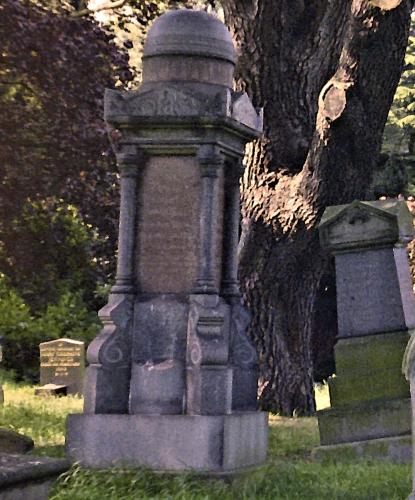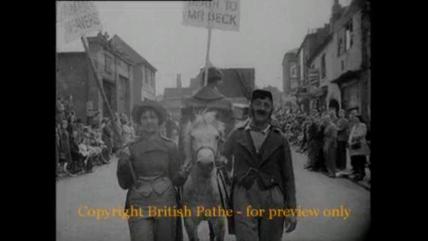|
Tansley1700
Sheffield |
31 of 136
Thu 24th Oct 2013 4:49pm
My great grandmother was a ribbon weaver and my great grandfather a watchmaker, and because of the fall of the weaving industry, emigrated to USA. My grandmother was born there, but they returned to Coventry around 1899 and then moved to Sheffield, again because of lack of work. w c young
|
| Industry, Business and Work - Weavers of Coventry | |
|
Pete-C
Coventry UK |
32 of 136
Wed 16th Apr 2014 11:27pm
In September 1963 I started work at J. & J. Cash Ltd as a trainee technician, aged 15.
I went with a Cash's van driver to a factory in Park St. to help clear bits from the design room and card cutting and on the way back he said, I'll show you the other factory that's already been cleared, that was in Carlton Rd. I never knew the companies' names until now, found this info:-
J. & J. Cash Ltd., share acquisitions W H Grant & Co Ltd. Registered office, Livingstone Mill, Lockhurst Lane.
Share transfer:- 13th March 1961. . . Into liquidation:- 29th Oct 1963.
Laird B & Co Ltd, St Lawrence's Works, Carlton Road.
Share transfer:- 1st March 1959. . . Into liquidation:- 29th Oct 1963.
Did hear the name MASON Road, shortly after this, then no more. |
| Industry, Business and Work - Weavers of Coventry | |
|
morgana
the secret garden |
33 of 136
Tue 26th May 2015 11:56am
|
| Industry, Business and Work - Weavers of Coventry | |
|
Kaga simpson
Peacehaven, East Sussex |
34 of 136
Tue 26th May 2015 5:57pm
TEKMELF, I used to deliver milk to a factory, I thought was in the road that ran parallel to the canal of Mason Road, that had big very noisy looms, the only weaving factory I knew in the area, have forgotten the name of the firm. I'm sure it was not in Mason Road - but it was a long time ago. |
| Industry, Business and Work - Weavers of Coventry | |
|
Tony1
Coventry |
35 of 136
Tue 9th Jun 2015 7:40pm
Hello colleagues.
In looking through many census sheets in the 1800s concerning weavers families living in around Coventry, I spot many deaths of infants and teenagers. I can recall the weaving trade slumped to a total collapse in the mid 1850s and many weavers were out of work.
They lived in overcrowded conditions with no sanitation, no sewage disposal or collection points, a place where children were lucky to survive.
My question is, what were the main causes of death of children in and around Coventry in the 1800s amongst weavers.
Whilst you are looking through your reference books what was the role of "loom turner" associated with silk ribbon weaving often carried out by young children.
Tony |
| Industry, Business and Work - Weavers of Coventry | |
|
Kaga simpson
Peacehaven, East Sussex |
36 of 136
Wed 10th Jun 2015 9:20pm
Tony 1. You really answered your own question - no sewage, no sanitation etc, But most doctors in the 20/30s were inadequately trained in obstetrics, if they used instruments that came from hospitals, thereby infecting mothers with puerperal fever when they were at their most vulnerable. The mass removal of tonsils in kids is now considered to have been unnecessary. But mainly it lay in the poor diet of the working people. Infant mortality rate was much higher in England than America or Australia, but it improved from 1910 onwards as the Govt started to subsidise clinics, and paid mothers allowances. With the increase in good food, boys of twelve were found to be, on average, three inches taller and eleven pounds heavier by 1939 than their fathers had been twenty years earlier. Insulin for diabetes 1922, immunisation for diphtheria 1930, and treatment for pneumonia and puerperal fever 1935, no antibiotics infections spread quickly, penicillin not till 1941 |
| Industry, Business and Work - Weavers of Coventry | |
|
Tony1
Coventry |
37 of 136
Thu 11th Jun 2015 5:05pm
Hi. Thanks for your reply and it's good solid information you provide but I am looking at the deaths in the weaver families in and around Coventry during the 1800s.
What I have learnt, around 1850 Coventry experienced an outbreak of cholera, then followed the weavers' depression in the 1860s, leaving many families a staple diet of bread and potatoes. Many adults took up drinking alcohol to resolve their depression leading to cardiovascular problems.
I am interested prior to 1850s what contributed to the deaths, was it accidents related to the weaving industry or disease, were the young mothers and the children working machinery or were the pregnant mothers encouraged to work heavy machinery.
Although I am seeking answers about weavers I should extend my concern and ask about the coalmine fields where miners working long hours in appalling conditions, about their illnesses and recorded deaths. |
| Industry, Business and Work - Weavers of Coventry | |
|
morgana
the secret garden |
38 of 136
Sun 28th Jun 2015 10:57pm
|
| Industry, Business and Work - Weavers of Coventry | |
|
morgana
the secret garden |
39 of 136
Sun 5th Jul 2015 11:11am
Does any one know in which graveyard Thomas Stevens buried in Coventry - weaver born in Foleshill, Coventry
Stevengraphs Bookmarks and Postcards etc |
| Industry, Business and Work - Weavers of Coventry | |
|
Midland Red
|
40 of 136
Sun 5th Jul 2015 11:53am
London Road, morgana - photo |
| Industry, Business and Work - Weavers of Coventry | |
|
morgana
the secret garden |
41 of 136
Sun 5th Jul 2015 11:56am
Thank you MidlandRed |
| Industry, Business and Work - Weavers of Coventry | |
|
Robthu
Coventry |
42 of 136
Sun 5th Jul 2015 2:26pm
Hello Morgana.
This is a picture of the Thomas Stevens stone I took thirty-odd years ago, before the limb of the cedar broke off and smashed it.
Regards
Derek
 |
| Industry, Business and Work - Weavers of Coventry | |
|
SJT
Brisbane, Australia |
43 of 136
Thu 5th Apr 2018 1:02am
On 11th Jun 2015 5:05pm, Tony1 said:
Hi. Thanks for your reply and it's good solid information you provide but I am looking at the deaths in the weaver families in and around Coventry during the 1800s.
I am interested prior to 1850s what contributed to the deaths, was it accidents related to the weaving industry or disease, were the young mothers and the children working machinery or were the pregnant mothers encouraged to work heavy machinery.
Hi Tony1. My understanding is that there really wasn't that much automation in Coventry weaving industry until relatively late in the nineteenth century. I understand there were Jacquard looms but the first steam engine was not installed until around August 1831 at Josiah Beck's Top Shop. A major riot occurred in Nov 1831 due to under-employment and underpayment (weavers used list prices and the current list, which itself was 2 years old (set in 1829), was not being adhered to by some "manufacturers" in Coventry). Beck's house and factory were set on fire and he was publicly humiliated and beaten. It was national news at the time, reported all over the country, and in the packed court house 5 months later 3 people were sentenced to hang (commuted to life in the colonies at the eleventh hour). The manufacturers, in fear of the weavers, responded by refusing to install more steam engines. I believe this state of affairs continued for some years, perhaps into the late 1830s or 1840s.
Women (and children?) were first employed by manufacturer, John Day, in the 1820s who worked out he could produce ribbons more cheaply by using unskilled labour to do the "picking" task. The practice was widely condemned (doing skilled artisans out of a job) and I understand the practice was not widely followed by other manufacturers at the time.
I know I'm not answering your question about what caused the high number of deaths of women and children in the early 1800s but I hope this information is of use.
SJT |
| Industry, Business and Work - Weavers of Coventry | |
|
SJT
Brisbane, Australia |
44 of 136
Thu 5th Apr 2018 1:22am
On 26th Jun 2013 6:17pm, npangele said:
About 1831 the first application of steam power to the driving of looms was brought about by Josiah Beck and in 1833 a larger steam driven loom was invented.
... A procession of workers proceeded to Mr Beck's factory, Beck was caught trying to escape and made to ride tailward through the town on a donkey. His house was ransacked, the warps cut from the looms and thrown into the Smithfield dam, and the factory burned down. The riot act was read, the cavalry brought in and many arrests were made. Three young men whose names were Toogood, Burbery and Sparkes were condemned to be hung; but the sentence was commuted to transportation for life.
Thanks for remembering the riot, npangele. It was a very significant event in Coventry at the time, reported in newspapers all over the country. My great, great, great grandfather Thomas was the Burbery you mention (correct / standardised spelling Burbury). His death sentence was commuted the day before he was to hang. There is a wealth of information available on the riot and on Thomas (see pic below) who became a wealthy man in Van Diemen's Land (my birthplace). Just wondering if you have a source for the donkey bit? The contemporary reports (including the trial transcript) state Beck was taken in a hand cart then dumped in the mud. My ancestor picked him up out of the mud, shielded him from the angry mob and escorted him home. So pleased to see the riot remembered - thanks again.
 PS: I'm writing a work of historical fiction based on Thomas' life from the riot to 1839 when he received a free pardon after apprehending bush rangers. It's an exciting tale, particularly the riot and its aftermath in Coventry.
PS: I'm writing a work of historical fiction based on Thomas' life from the riot to 1839 when he received a free pardon after apprehending bush rangers. It's an exciting tale, particularly the riot and its aftermath in Coventry. |
| Industry, Business and Work - Weavers of Coventry | |
|
Helen F
Warrington |
45 of 136
Thu 5th Apr 2018 11:31am
I love how snippets of information are being welded back together to form histories. 
|
| Industry, Business and Work - Weavers of Coventry | |
Website & counter by Rob Orland © 2024
Load time: 357ms